——What is a sheet metal fabricator?
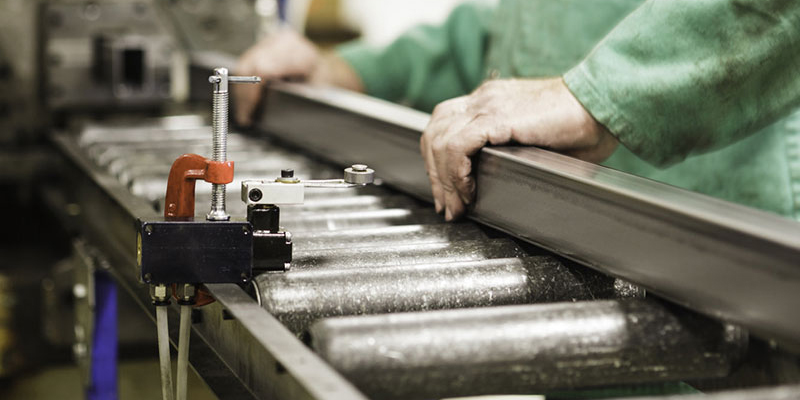
A sheet metal fabricator is a professional technician or company that specializes in processing sheet metal into a variety of products and components by cutting, bending, forming and assembling. Sheet metal fabrication is an important part of various industries such as automotive, aerospace, construction, electronics and manufacturing.
Some of the key aspects of sheet metal fabrication:
Materials: Sheet metal fabricators use a variety of sheet metal, including steel, aluminum, stainless steel, copper and brass. The choice of material depends on the specific application and desired properties, such as strength, corrosion resistance or appearance.
Cutting: Cutting is the first step in the fabrication process. Common methods used to cut sheet metal include laser cutting, plasma cutting, waterjet cutting, and mechanical methods such as shearing or sawing. The choice of cutting method depends on the thickness of the material and the accuracy required.
Bending: After cutting, sheet metal is bent into specific shapes and angles, often using equipment such as pressure brakes. Accurate bending is essential to achieve the desired geometry of the final product.
Forming and shaping: Sheet metal can be further shaped through processes such as rolling, stamping, punching and deep drawing. These processes are used to create complex parts and features.
Welding: Welding is used to join sheet metal components together. Common welding methods include MIG (Metal Inert Gas) welding, TIG (Tungsten Inert Gas) welding and spot welding, depending on the material and application.
ASSEMBLY: Sheet metal components may need to be assembled with other components to form a complete product. This may require the use of fasteners, adhesives or additional welding.
SURFACE FINISHING: A variety of surface finishing techniques are required to improve the appearance and protection of sheet metal products. This may include painting, powder coating, plating, anodizing or polishing.
QUALITY CONTROL: Quality control measures are essential to ensure that sheet metal fabricated products meet specified tolerances and standards. This includes dimensional checks, material testing and visual inspections.
Prototyping: Before starting mass production, fabricators often create prototypes to test and refine designs. This helps to identify and resolve any problems early in the process.
Customization: Sheet metal fabrication can be highly customized to meet the unique requirements of each project. Manufacturers work closely with customers to understand their needs and design specifications.
Sheet metal fabricators play an important role in the manufacturing and construction industries, providing everything from simple brackets and enclosures to complex assemblies and structural components.GD-HUB's expertise in sheet metal fabrication allows us to create durable, precise solutions for a variety of applications.
——What sheet metal processing services are available of sheet metal fabricators?
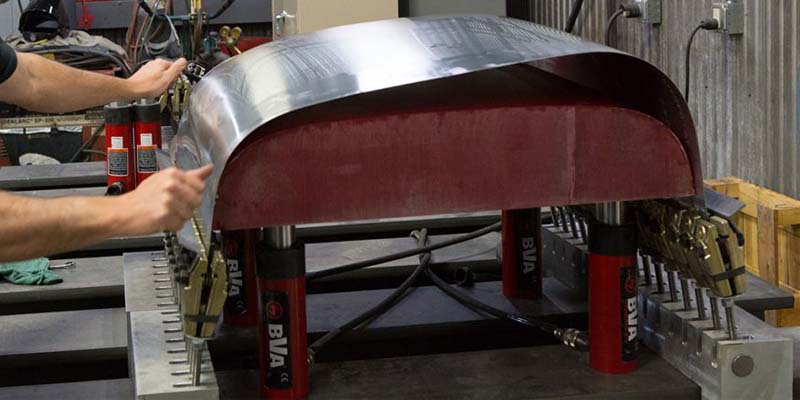
Cutting:
Laser Cutting: Precise and fast cutting using a laser beam. Ideal for intricate shapes and fine details.
Plasma Cutting: Uses a high-temperature plasma arc to cut through sheet metal quickly.
Waterjet Cutting: Utilizes a high-pressure stream of water mixed with abrasive materials to cut through various materials, including sheet metal.
Bending and Forming:
Press Brake Bending: Bending sheet metal to create angles and shapes using a press brake machine.
Rolling: Used to create curved or cylindrical shapes by passing sheet metal through rollers.
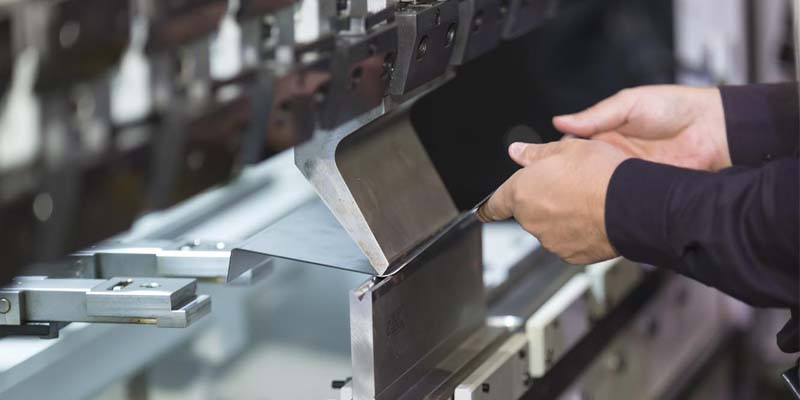
Stamping and Punching:
Stamping: The process of forming shapes, patterns, or holes in sheet metal using a die and a press.
Punching: Creating holes or perforations in sheet metal using a punch and die set.
Deep Drawing:
Deep Drawing: A method for creating three-dimensional shapes and enclosures from sheet metal by drawing the material into a die cavity.
Welding:
MIG Welding: Metal Inert Gas welding is a common method for joining sheet metal using a consumable wire electrode and inert gas shielding.
TIG Welding: Tungsten Inert Gas welding provides precise control over the welding process, making it suitable for thin sheet metal.
Spot Welding: Welding method where two or more sheets are joined by heating the metal at specific points.
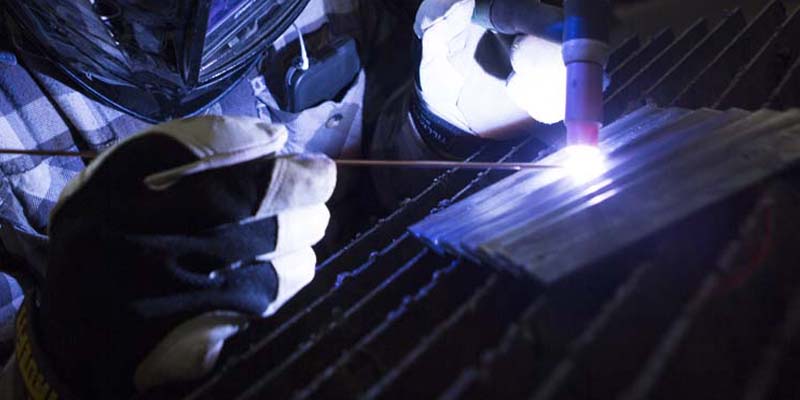
Assembly:
Riveting: Joining sheet metal components using rivets.
Fasteners: Using screws, nuts, and bolts to assemble sheet metal parts.
Adhesive Bonding: Using adhesives to join sheet metal components together.
Finishing:
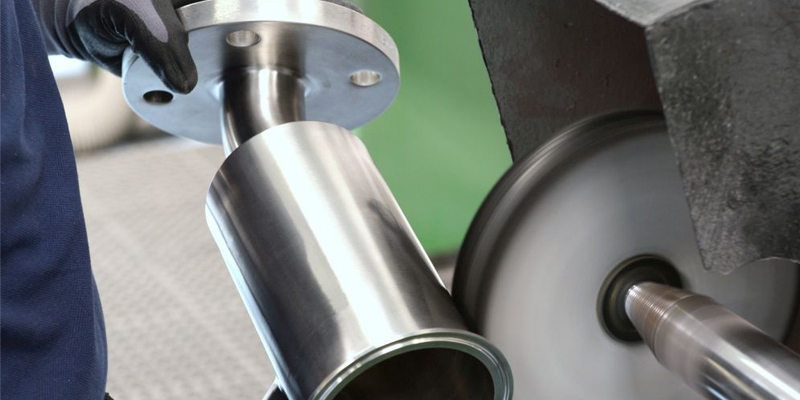
Painting and Powder Coating: Applying coatings to enhance appearance and provide corrosion protection.
Anodizing: A chemical process that adds a protective oxide layer to aluminum sheet metal.
Polishing and Deburring: Smoothing and removing sharp edges from sheet metal parts.
Prototyping and Design Services:
Some fabricators offer design assistance and prototyping services to help clients refine their designs before full-scale production.
Materials Handling: Fabricators work with various sheet metal materials, including steel, aluminum, stainless steel, copper, brass, and more, depending on the client's needs.
CNC Machining: Some fabricators offer CNC machining services for additional precision, such as drilling holes, milling, and tapping.
Customization: Sheet metal fabricators can provide customized solutions to meet the unique requirements of each project, including specialized finishes and coatings.
——Processable materials for sheet metal processing plants
Steel
Carbon Steel: This is the most commonly used type of steel in sheet metal fabrication. It is known for its high strength and low price.
Stainless Steel: Stainless steel has corrosion resistance and durability and is suitable for harsh environments such as food and pharmaceuticals.
Galvanized Steel: Galvanized steel has a protective zinc coating that enhances its corrosion resistance, making it ideal for outdoor applications.
Aluminum:
ALUMINUM SHEET: Aluminum is lightweight, corrosion-resistant, and easy to form and machine. Commonly used in aerospace, automotive and construction applications.
Aluminum Alloys: Various aluminum alloys offer specific properties such as enhanced strength, electrical conductivity or heat resistance.
Copper and Brass
Copper Sheet: Copper is known for its excellent electrical and thermal conductivity, making it suitable for electrical components and heat exchangers.
Brass: Brass is a copper-zinc alloy that combines corrosion resistance with aesthetic appeal, making it suitable for decorative applications.
Titanium:
Titanium Sheet: Titanium offers a high strength-to-weight ratio and corrosion resistance. It is used in the aerospace, medical and chemical processing industries.
Nickel Alloys:
Inconel Alloys Inconel alloys are heat and corrosion resistant and are suitable for extreme temperatures and corrosive environments. They are commonly used in the aerospace and chemical processing industries.
Hastelloy: Hastelloy alloys are highly resistant to corrosion, especially in acidic environments. They are used in chemical processing and offshore oil platforms.
Plastics
Polycarbonate: Transparent and impact resistant, commonly used in protective covers and enclosures.
Polyethylene (PE): Lightweight and chemically resistant, it can be used for a variety of applications, including tanks and containers.
Polypropylene (PP): known for its chemical resistance and used in laboratory equipment and chemical processing.
Acrylic: Clear, weather resistant, used for signage and displays.
Composites:
Fiber-reinforced composites: These materials combine fibers (e.g., carbon, glass) with resins to make lightweight, high-strength components used in aerospace, automotive and sporting goods.
Metal Matrix Composites (MMC): Metal matrix composites consist of a metal matrix embedded with ceramic or carbon fibers and are used in aerospace and automotive applications.
The choice of material is critical to sheet metal fabrication because it affects the strength, weight, corrosion resistance, electrical conductivity and other properties of the product. Please consult GD-HUB for professional advice on the selection of materials to suit your project, based on the specific requirements of the project and the intended use of the final product.
——Benefits of sheet metal working
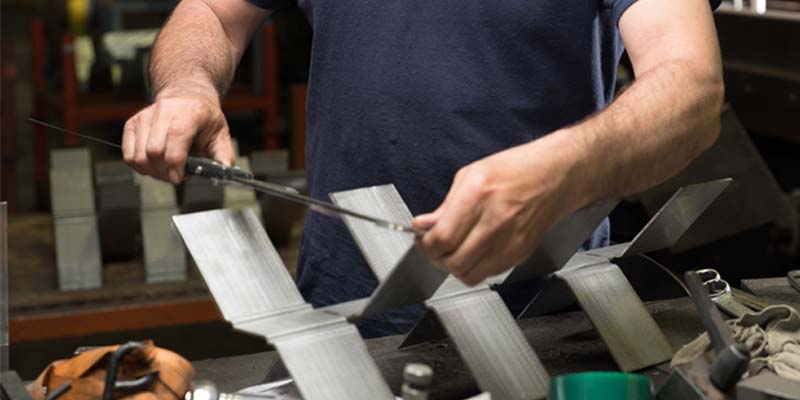
Sheet metal working offers numerous benefits across various industries and applications due to its versatility, durability, and cost-effectiveness.
Versatility: Sheet metal can be used to create a wide range of products and components, from simple brackets and enclosures to complex structures and machinery. It can take on various shapes and sizes, making it suitable for diverse applications.
Strength and Durability: Sheet metal is inherently strong and durable, which makes it ideal for applications where structural integrity and longevity are essential. It can withstand environmental factors, including temperature fluctuations and corrosion.
Cost-Effective: Sheet metal fabrication processes are often cost-effective, especially for high-volume production. The ability to mass-produce sheet metal components can lead to lower per-unit costs.
Precision and Accuracy: Sheet metal fabrication allows for high precision and accuracy in manufacturing. Computer-controlled equipment, such as CNC machines and laser cutters, ensures that parts are produced to tight tolerances.
Speed of Production: Many sheet metal processes, such as laser cutting and CNC machining, are highly automated, leading to faster production times compared to traditional manufacturing methods.
Lightweight: While sheet metal is strong, it is also relatively lightweight, making it suitable for applications where weight is a concern, such as aerospace and automotive industries.
Customization: Sheet metal can be customized to meet specific design requirements. Fabricators can create unique shapes, features, and finishes to suit the needs of each project.
Material Options: Sheet metal comes in various materials, including steel, aluminum, stainless steel, copper, and brass, each with its own set of properties. This variety allows for material selection based on factors like strength, corrosion resistance, and conductivity.
Efficient Use of Material: Sheet metal fabrication often generates minimal waste since parts can be cut from large sheets, and leftover material can be recycled or reused.
Prototyping and Iteration: Sheet metal fabrication allows for the rapid prototyping of designs. This enables manufacturers to test and refine products before full-scale production, reducing the risk of costly errors.
Ease of Assembly: Sheet metal components can be designed for ease of assembly, which can streamline the manufacturing process and reduce labor costs.
Aesthetics: Sheet metal products can be finished with various coatings and treatments to enhance their appearance, such as painting, powder coating, or polishing.
Recyclability: Many sheet metal materials are recyclable, contributing to sustainability efforts and reducing the environmental impact of manufacturing.
Resistance to Fire and Heat: Some sheet metal materials, such as stainless steel, have excellent fire resistance and can withstand high temperatures, making them suitable for applications in extreme conditions.
Electrical and Thermal Conductivity: Materials like copper and aluminum are prized for their excellent electrical and thermal conductivity, making them valuable in electrical and HVAC applications.
——Application of sheet metal working
Car Bodies: Sheet metal is used to create the structural components of automobiles, including the body panels, chassis, and frames.
Exhaust Systems: Sheet metal is employed in the fabrication of exhaust pipes, mufflers, and catalytic converters.
Interior Components: It is used for manufacturing dashboards, door panels, and other interior parts.
Aircraft Fuselages: Sheet metal is used in the construction of aircraft fuselages and wings.
Engine Components: Sheet metal components can be found in jet engines and other aircraft propulsion systems.
Spacecraft: The space industry uses sheet metal for spacecraft structural components and heat shields.
3. Construction and Architecture:
Roofing and Cladding: Sheet metal is employed for roofing materials and exterior cladding of buildings.
Rain Gutters and Downspouts: It is used for manufacturing gutter systems to manage rainwater.
Ductwork: HVAC ducts are often made from sheet metal for efficient air distribution.
4. Electronics:
Enclosures: Sheet metal enclosures house electronic components and protect them from environmental factors.
Chassis: It is used for making the chassis of electronic devices and appliances.
Racks and Cabinets: Sheet metal racks and cabinets are common in data centers and telecommunications.
Medical Cabinets: Sheet metal cabinets are used to house medical equipment and supplies.
Instrumentation: Precision sheet metal components are used in medical instruments and devices.
6. Consumer Goods:
Appliances: Sheet metal is used in the production of appliances such as refrigerators, ovens, and washing machines.
Furniture: Metal furniture, including tables and chairs, often incorporates sheet metal elements.
Cookware: Some types of cookware, like baking sheets and pans, are made from sheet metal.
7. Energy and Power Generation:
Solar Panels: Sheet metal is used in the construction of solar panel frames and mounting systems.
Electrical Boxes: Electrical enclosures and junction boxes are typically made from sheet metal.
Transformer Tanks: Large transformers used in power distribution often have sheet metal tanks.
8. Industrial Equipment:
Machine Enclosures: Sheet metal is used to enclose machinery and equipment in industrial settings.
Conveyor Systems: Components for conveyor systems are manufactured using sheet metal.
9. Defense and Military:
Sheet metal is used in the production of military vehicles, armored vehicles, and various defense equipment.
10. Telecommunications:
Sheet metal enclosures house telecom infrastructure equipment like routers, switches, and servers.
11. Food Processing:
Stainless steel sheet metal is used for food processing equipment, including conveyor systems, cutting tables, and storage containers.
12. Aviation and Marine:
Sheet metal components are used in aviation and marine vessels for various purposes, including hulls, wings, and interior components.
——GD-HUB advantage in sheet metal fabrication:
Experience and expertise:
GD-HUB has a proven track record and extensive experience in sheet metal fabrication. Experienced GD-HUB has encountered a wide variety of challenges and has developed effective solutions.
Technical Capabilities:
GD-HUB has the equipment and technology necessary to meet your specific project requirements, including cutting, bending, welding and surface preparation capabilities.
Skilled Labor:
A skilled and well-trained workforce is key to producing high quality sheet metal products.GD-HUB employs excellent technicians and engineers.
Quality control standards:
Quality control measures are critical to ensure that manufactured products meet specified tolerances and industry standards.GD-HUB has the above qualifications.
Material expertise:
Different sheet metals require unique handling and processing techniques. gd-hub has the expertise to work with a wide range of metals (e.g. steel, aluminum, stainless steel, etc.).
Customization and prototyping:
GD-HUB customizes products to your exact specifications. Prototyping services help refine the design before full-scale production.
Design Assistance:
GD-HUB can provide design assistance and engineering support to help optimize your sheet metal components for manufacturing efficiency and cost effectiveness.
On-time delivery:
GD-HUB has a track record of delivering projects on time. Guaranteeing that your production will be completed successfully within the specified time frame without disrupting your project schedule.
Communication skills:
GD-HUB is critical to understanding your project requirements, resolving concerns, and updating project progress on a regular basis through effective communication.
Competitive Pricing:
While cost should not be the only factor in your decision, GD-HUB is committed to providing competitive pricing for our services without sacrificing quality.
Capacity and scalability:
GD-HUB can meet your throughput requirements and has the flexibility to scale up or down as needed to accommodate changing project requirements.
Safety and Compliance:
GD-HUB follows safety protocols and adheres to relevant industry regulations and standards, including OSHA (Occupational Safety and Health Administration) guidelines.
By considering these qualities and conducting thorough research, you can be confident that GD-HUB is a sheet metal fabricator that meets the needs and expectations of your project, ultimately achieving a successful collaboration and high-quality results for you.
Consult GD-HUB for sheet metal processing solutions.